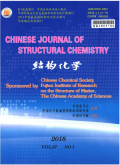CeO2 Particles Anchored to Ni2P Nanoplate for Efficient Photo-catalytic Hydrogen Evolution
基本信息来源于合作网站,原文需代理用户跳转至来源网站获取
摘要:
Photocatalytic hydrogen evolution can convert intermittent and dispersive solar energy into hydrogen with high energy density,which is expected to fundamentally solve the problems of environmental pollution and energy shortages.In this experiment,the performance of the catalyst is modified by in-troducing cocatalyst and morphology control.Ni(OH)2 nanoflowers are used as substrates to derive nanoplate stack Ni2P by high-temperature phosphating method,and a great many of CeO2 nanoparticles are anchored in the Ni2P.This unique 3D/0D combination effectively inhibits the agglomeration of CeO2 nano-particles and shortens the electron transfer path.Secondly,the introduction of metal-like performance of Ni2P broadens the light absorption range of the catalyst and reduces the overpotential of the catalyst,which is a key factor in enhancing the catalytic activity.The design ideas of this experiment have reference significance for the design of efficient and environmentally friendly photocatalysts.

推荐文章
Ni2P/ZrO2催化剂对苯酚的加氢性能
生物能源
催化
加氢
苯酚
磷化镍
氧化锆
Au/CeO2、Pd/CeO2和Au-Pd/CeO2催化剂甲醇部分氧化制氢性能的研究
甲醇部分氧化
Au-Pd双金属催化剂
氧化铈
制氢
低温合成Ni2P催化剂及加氢脱硫性能
氢等离子体
Ni2P
低温合成
二苯并噻吩
加氢脱硫
负载型Ni2P加氢催化剂的研究进展
Ni2P
制备方法
加氢脱硫
加氢脱氮
内容分析
关键词云
关键词热度
相关文献总数
(/次)
(/年)
引文网络
引文网络
二级参考文献 (0)
共引文献 (0)
参考文献 (0)
节点文献
引证文献 (0)
同被引文献 (0)
二级引证文献 (0)
2022(0)
- 参考文献(0)
- 二级参考文献(0)
- 引证文献(0)
- 二级引证文献(0)
引文网络交叉学科
相关学者/机构
期刊影响力
结构化学
主办单位:
中国化学会
中国科学院福建物质结构研究所
出版周期:
月刊
ISSN:
0254-5861
CN:
35-1112/TQ
开本:
出版地:
福建省福州市杨桥西路155号
邮发代号:
创刊时间:
语种:
eng
出版文献量(篇)
5114
总下载数(次)
0
总被引数(次)
8477
期刊文献
相关文献
推荐文献
- 期刊分类
- 期刊(年)
- 期刊(期)
- 期刊推荐
力学
化学
地球物理学
地质学
基础科学综合
大学学报
天文学
天文学、地球科学
数学
气象学
海洋学
物理学
生物学
生物科学
自然地理学和测绘学
自然科学总论
自然科学理论与方法
资源科学
非线性科学与系统科学
结构化学2022
结构化学2021
结构化学2020
结构化学2019
结构化学2018
结构化学2017
结构化学2016
结构化学2015
结构化学2014
结构化学2013
结构化学2012
结构化学2011
结构化学2010
结构化学2009
结构化学2008
结构化学2007
结构化学2006
结构化学2005
结构化学2004
结构化学2003
结构化学2002
结构化学2001
结构化学2000
结构化学1999

 免费查重
免费查重










